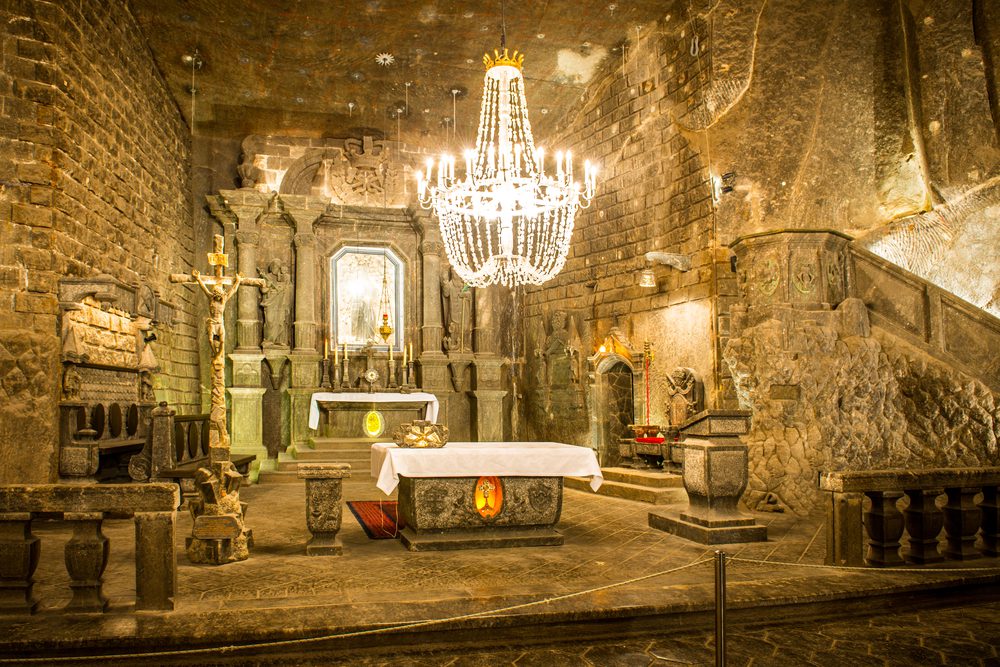
Wieliczka Salt Mine, Poland
This table salt mine in southern Poland’s town of Wieliczka is popularly called the “Underground Salt Cathedral” because of its subterranean site and immense size, occupying over 179 miles of the town’s land.
This ancient underground city was first established in the 13th century and has continued to create table salt until commercial mining ended in 1996 and until operations halted entirely in 2007, which makes it one of the oldest salt mines that stayed operational until the 21st century.
Some experts believe that exploration and use of the salt deposit in this area date back to a much earlier time than that because researchers have found ancient cemeteries dating back to the Neolithic Period in the area.
Nowadays, the Wieliczka Salt Mine is regarded as a national historic monument in this country not only because of its 700-year legacy of making salt but also for the intricate rock salt carvings and complex tunnels inside the facility.
This includes different statues of mythical figures and several chapels which were either created by the miners or added later by contemporary artists.
Its tunnels and galleries spread more than 985 feet underground, and the mine is now a popular tourist site with approximately 1.2 million visitors yearly.







